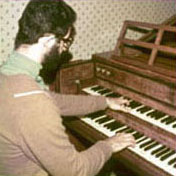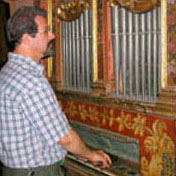Published Book Reviews
Please find below excerpts from two reviews written by distinguished harpsichordists.
Menno van Delft in The British Clavichord Society Newsletter, No.44, June 2009:
(reviewing the 5th ed. of Dec. 2008.) “Few would disagree, I think, with the notion that fingering is one of the most important technical issues in keyboard playing. Because of its impact on touch and articulation it very practically and directly relates to musical shaping and expression. This publication therefore is a welcome addition to the literature on the topic.
Claudio Di Veroli ... has studied and put into practice early fingering techniques for decades, ... He offers a synthesis of fingering practices of the seventeenth and early eighteenth century, presented in the form of a set of more than fifty rules, divided over five chapters dealing with scales (both plain and ornamented), passages and all kinds of various textures. ...
Di Veroli offers a large amount of fingering examples ... and thoroughly examines all kinds of fingering questions. ... this book is a valuable in-depth study ... [it] will stimulate the reader to reconsider quite a few important fingering issues and to look at some of the historical information from a different point of view. Di Veroli has made a serious attempt to put into practice what the often confusing and contradicting sources and historical fingering examples suggest. For that he can only be praised!”
PS: The above review contains some observations that the author of the book has addressed in a letter published in the same magazine, No.45, Oct. 2009.
Penelope Cave in Harpsichord & fortepiano, Vol.25 No.2, Spring 2021:
(reviewing the 8th ed. of Oct. 2020.) “Di Veroli's micro-analytical approach ... Di Veroli offers a total of fifth-three rules ... [and]... does his very best to meticulously cover permutations ... There are plenty of examples for each rule ... Experimenting with his examples of such fingerings is well worth the time ...
In following this method, we have to accept Di Veroli's argument that 'unless a slur were specifically written in the score, the “default” or standard articulation in pre-Romantic music was always a very careful detached or “non-legato” touch ...' ...
There is a fascination in this detailed ... exploration ... Di Veroli presents his collection of finger-choreography with numerous examples to consider and experience. ... If it encourages us all to devote more thought to the extent to which fingering can aid historically informed articulation, and expressive musical rhetoric, then it can only be for the good.”



